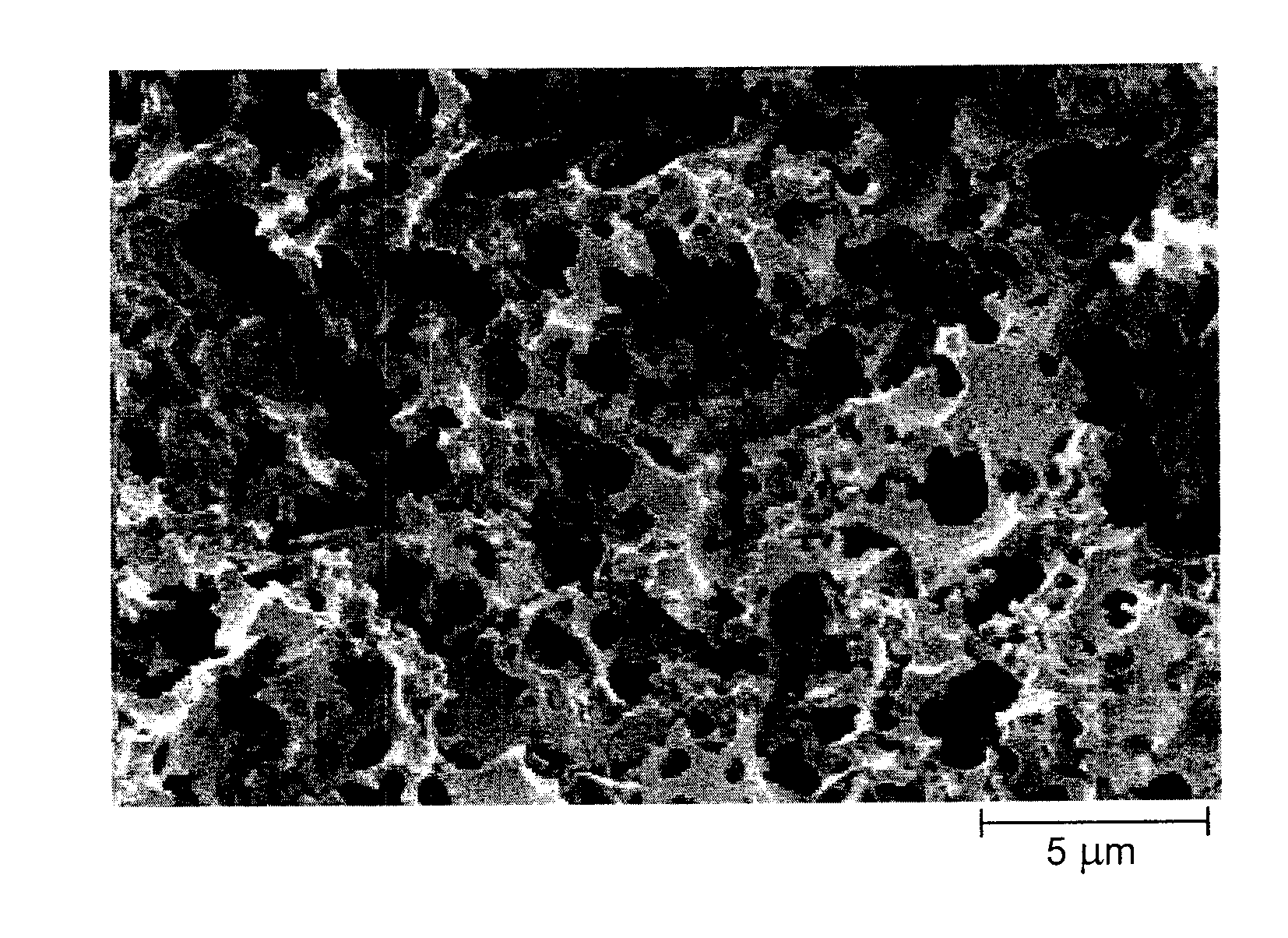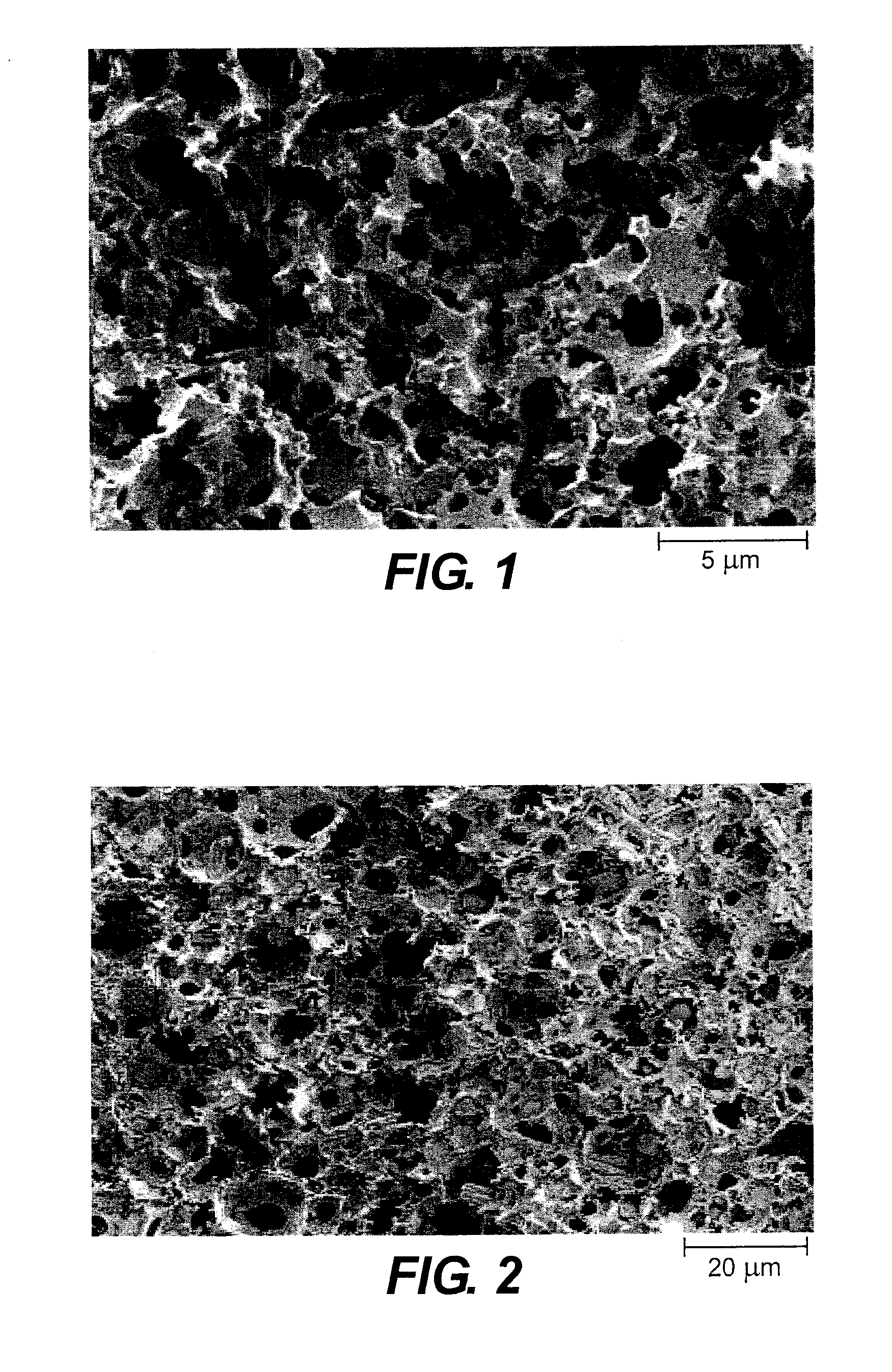Particulate polymeric material
- Summary
- Abstract
- Description
- Claims
- Application Information
AI Technical Summary
Benefits of technology
Problems solved by technology
Method used
Image
Examples
example 1
PolyHIPE Formation
[0092] Styrene (9 ml) and divinyl benzene (1 ml, 55% purity) were mixed with sorbitan monooleate (3 ml) in a 500 ml wide-mouth plastic bottle and stirred with a Polytron high shear mixer at 4000 rpm under a blanket of nitrogen gas. A solution of calcium chloride (1 g) and potassium persulfate (0.4 g) in water (90 ml) that had been deoxygenated by bubbling nitrogen through it for 20 minutes was then added over approximately 30 minutes by peristaltic pump to the stirred monomers. During this addition, the stirrer head was raised as the volume in the bottle increased to ensure efficient mixing. After addition was complete, the mixture was stirred a further 10 minutes at 5000 rpm.
[0093] The HIPE formed was coated at 100 μm thickness onto aluminium foil, which was then laminated with a flat polyester sheet and cured in the oven at 70° C. for a minimum of 6 hours. The polyester laminate was removed and the coating allowed to dry at 60° C. for 2 hours. The resultant pol...
example 2
PolyHIPE Formation
[0094] The effect of high shear stirring on the polymer structure was observed by preparing three polyHIPE samples using the method of Example 1, except that each sample was prepared using a different shear rate. During the addition of the aqueous phase, the Polytron mixer was run at 2000, 4000 and 6000 rpm. SEM of the resultant samples clearly shows the reduction in size of the pore structure with increasing shear rate—see FIG. 2 (shear rate 2000 rpm), FIG. 3 (shear rate 4000 rpm) and FIG. 4 (shear rate 6000 rpm). FIG. 5 shows a graphical relationship between shear rate and mean pore diameter.
example 3
PolyHIPE Formation
[0095] Styrene (4.5 ml), divinyl benzene (0.5 ml, 55% purity) and sorbitan monooleate (3 ml) were dissolved in toluene (5 ml) and degassed with nitrogen bubbling for 20 minutes. This mixture was stirred at 300 rpm with a 6-bladed impeller (38 mm diameter) while a nitrogen degassed solution of calcium chloride (1 g) and potassium persulfate (0.2 g) was added over approximately 1 hour by peristaltic pump. Stirring was continued for a further 5 minutes and then a sample of the emulsion was placed in an oven at 60° C. for 24 hours to cure, followed by heating under vacuum at 75° C. to dry. From SEM (FIG. 6) it can be seen that not only has the typical polyHIPE structure been formed but that the polystyrene itself is porous.
PUM
| Property | Measurement | Unit |
|---|---|---|
| Pore size | aaaaa | aaaaa |
| Percent by mass | aaaaa | aaaaa |
| Length | aaaaa | aaaaa |
Abstract
Description
Claims
Application Information
 Login to View More
Login to View More - R&D
- Intellectual Property
- Life Sciences
- Materials
- Tech Scout
- Unparalleled Data Quality
- Higher Quality Content
- 60% Fewer Hallucinations
Browse by: Latest US Patents, China's latest patents, Technical Efficacy Thesaurus, Application Domain, Technology Topic, Popular Technical Reports.
© 2025 PatSnap. All rights reserved.Legal|Privacy policy|Modern Slavery Act Transparency Statement|Sitemap|About US| Contact US: help@patsnap.com



